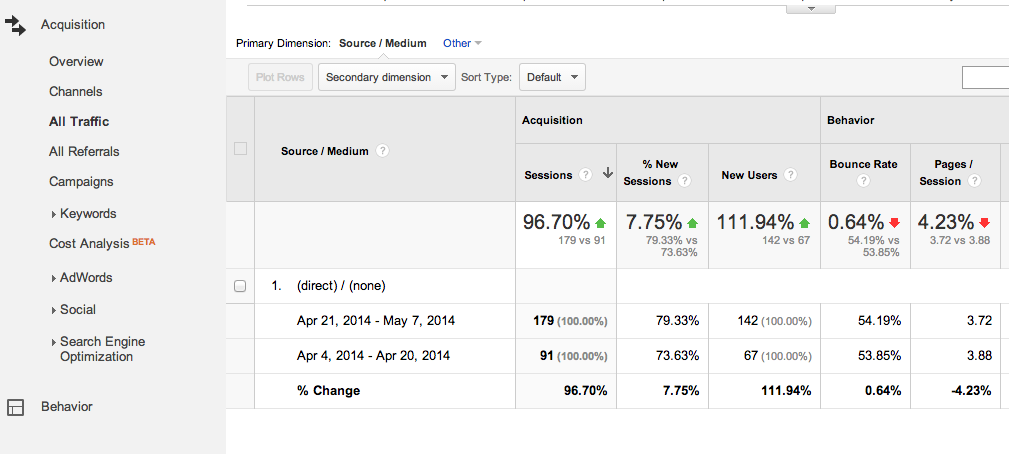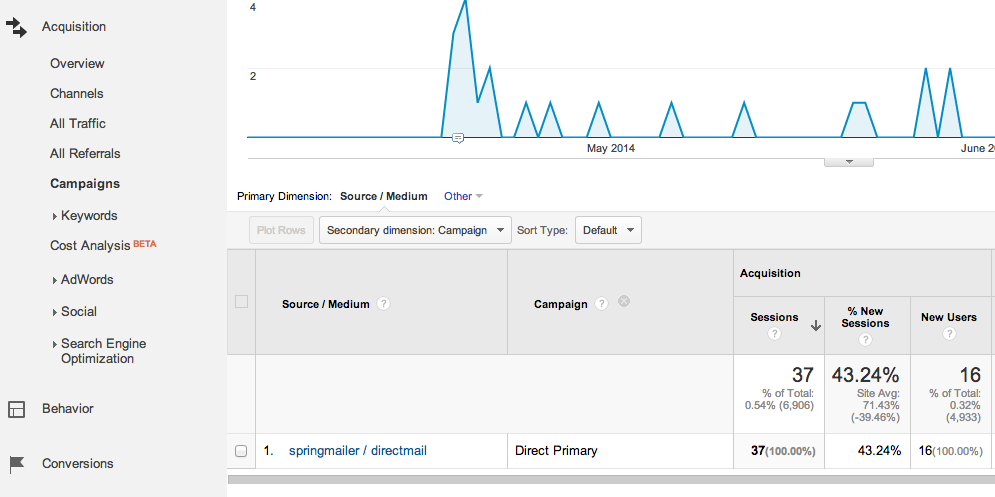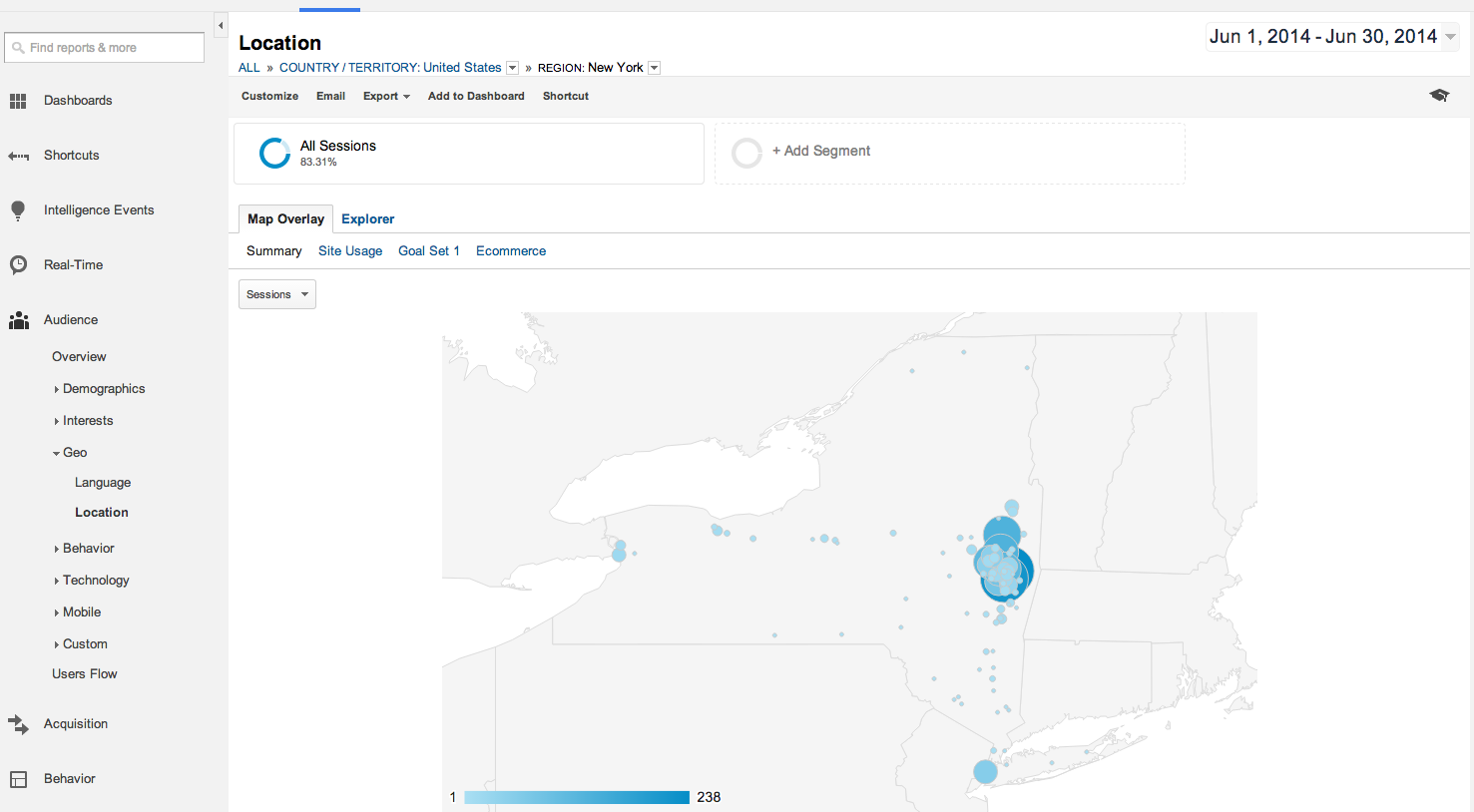May 21, 2024
Tracking Offline Marketing in Google Analytics
By Megalytic Staff - July 16, 2014

Even in our increasingly digital world, business owners and marketers too often think of online and offline channels as siloed. They’re stuck trying to measure the impact of TV ads, brochures, direct mail pieces, billboards, magazine ads and other offline materials independently, with limited capability, in and of themselves, to track the website traffic generated by these campaigns.
Yet offline channels such as TV advertising result in direct impact on website activity every day. Visitors hear about a product or company offline and then go online to research. As a result, Google Analytics can tell you a lot about people who are looking up your brand, even if their first encounter was through offline channels.
Direct Traffic
Direct traffic can provide a solid indicator of increases in brand awareness. If more people are accessing your website by directly typing in your URL after seeing it in a television ad or billboard, you’ll see a rise in direct sessions. Segment to the specific timeframe when you were running a campaign and compare to a previous date range to see how much change the direct traffic showed.
For example, this screenshot shows traffic to a website around the time of a heavy marketing push promoting a grand opening event. You can see sessions doubled compared to the previous period. You can also see that a significant portion of these sessions came from new visitors, showing that the campaign managed to reach a volume of people who hadn’t accessed the website in the past.
You will also want to pay attention to the quality of the direct visits you received in that timeframe. Did people spend extended periods of time reading content on your site, or did they quickly bounce off? Did they look at specific products or services related to the campaign you were running? Were they converting at a higher rate than usual? Of course, be aware that direct traffic includes any sessions that have no other source attached, often including a high number of organic visits where Google was unable to track a referrer. See this article for more information about just how unpredictable the actual source of direct traffic can be.
Brand Searches
No matter how heavily you promote a specific campaign URL, or how memorable you make your campaign creative, your offline ads will generate brand searches – customers’ googling your name, NOT your advertising creative. As a crucial part of measuring awareness from an offline campaign, watch for changes in search impressions and clicks for your brand name. Webmaster Tools can show you if there’s been a recent rise in people searching for your company’s name. If your TV ads, direct mail or other offline marketing are proving successful, you should see that success reflected online with people searching for you.
You can access this data directly in Google Analytics as long as you’ve linked Webmaster Tools and Google Analytics. If you haven’t done so already, here are instructions .
You’ll want to go to Acquisition > Search Engine Optimization > Queries and then filter to only show queries containing your brand name. You can then compare the date range your campaign ran to previous to see if brand searches went up or down. Be aware you can only see data from the past three months here. Sometimes, you’ll even see people searching terms related to your ad. For example, if you were responsible for VW’s Darth Vader ad, you might see searches for “volkswagen darth vader commercial” that would help show how many people engaged with the ad. You can also check Google Trends to see if searches for terms relevant to your brand or a specific campaign spiked. In addition, look at average position for those keywords in Webmaster Tools to see how high your site ranks for phrases related to a specific campaign.
Also, if you are running a PPC campaign with branded keywords, look for an increase or decrease in paid search queries containing your brand. As an easy way of looking at brand vs. non-brand paid search, Google Analytics recently added a feature to separate these in the Channels report. Learn more in this article .
Custom URLs
Custom URLs are a way to condense your page URL into something that is readable and easily remembered. They can also be used to ensure visits from offline marketing pieces can be properly segmented in analytics.
For example, say you are planning a direct mailer to encourage people to sign up for an open house event. You may choose to list www.example.com/register as the page for users to RSVP. You will include this URL on all direct mail pieces about the event, but will be careful to never link to this page from your site or anywhere else online. You can also prevent such pages from showing up in search results and earning organic traffic by using one of the robots meta tags Yoast outlines. This ensures the only people accessing this URL are those who saw it via direct marketing efforts.
You can also buy a new domain and redirect it to a unique page on your site to give visitors an easier-to-remember URL to type into their address bar. For example, if you’re doing a big push around a one-day sale, you may choose to buy sundaysale.com and forward it to example.com/sundaysale on your site. Depending on how advanced you want to get, you can even forward a custom URL to a page on your own domain with campaign tracking parameters tacked on, so you can see results clearly labeled in the Campaigns section of Analytics.
For example, say you want to track visits from a direct mail piece you’re sending out pointing people to RSVP online for an open house. You might choose to use the URL attendopenhouse.com, which then redirects to www.example.com/register?utm_source=direct&utm_medium=mailer&utm_campaign=openhouse. So anyone who comes from the direct mail piece will show the source as direct , medium as mailer , and campaign as openhouse . That way you’ll be able to easily identify the response from your mailer when you can link sessions and conversions to those parameters.
This screenshot shows an example where users typed in a URL from a direct mail piece, which redirected to a URL with tracking parameters. With the proper labels in place, the Campaigns section in analytics clearly shows these sessions as coming from a specific direct mail campaign.
Geographic Data
Finally, if you ran campaigns targeted to specific regions, look at sessions and conversions for those geographic areas. For example, you can look at conversions by city or metro area and decide where you should focus ad spend the next time around based on where you see the best response. Or if you didn’t make much of a dent in an area you’d hoped, you can note to focus more advertising effort there next time around. Read our tips for segmenting stats by geography for more specifics on how to slice and dice this data.
As geography often serves as a key indicator of whether or not you’re hitting your target audience properly, looking at regional data is a crucial part of measuring the impact of a campaign.
Conclusion
As you can see, there are a number of ways to track offline marketing efforts in Google Analytics. While none of these methods will provide a complete picture of the results you’ve gotten from a particular campaign, they will help you offer better insight to your boss or clients on some directly measurable impact. The more planning you have in place from the start for tracking results from campaigns across all mediums, the more strategically you can spend your advertising dollars.



